Canine arthritis has been well recognized for many years. However, until recently, veterinary professionals believed cats were less likely to develop this painful, degenerative joint condition. Keep in mind that cats are pros at masking pain, and their owners are less likely than dog owners to bring them for routine wellness checkups, during which veterinarians can detect early-stage arthritis. Veterinary professionals now recognize that cats can—and often do—develop arthritis, suffering the same uncomfortable and debilitating symptoms as dogs. To ensure arthritic cats receive the care and treatment they deserve, our Providence Vet team explains how to identify feline arthritis signs and describes how you can help manage your cat’s discomfort.
Feline arthritis causes
Cartilage located between a cat’s joint bones helps cushion the impact on the bones as a cat moves around. As a cat ages, the cartilage can deteriorate, causing inflammation and pain. In addition to age, other factors that increase a cat’s arthritis risk include:
- Normal wear and tear — As cats age, normal wear and tear can lead to joint weakening.
- Abnormal hip development — Abnormal hip development may affect these joints’ cartilage.
- Obesity — Obesity increases your cat’s joint damage risk and subsequent osteoarthritis.
- Injury — A cat who experiences a joint fracture or injury may develop arthritis in the healed joint.
- Genetics — Some cats have an increased arthritis risk, including Maine coon, Persian, Scottish fold, and Siamese cat breeds.
Feline arthritis signs
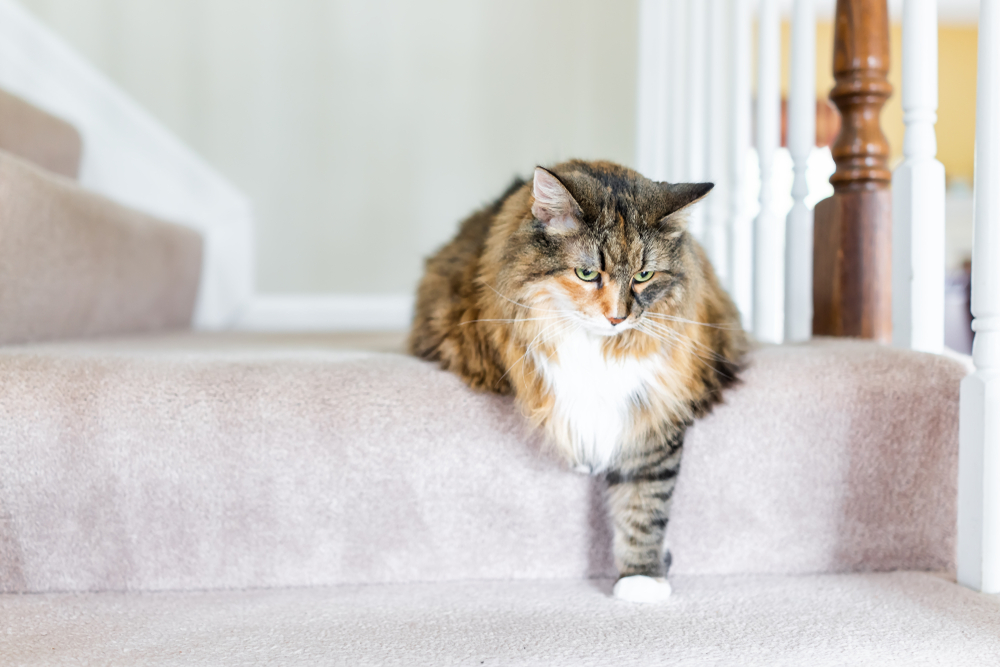
Feline arthritis can be challenging to identify. This condition’s earliest signs can be subtle, and cats often hide obvious signs until the pain increases enough to change their behavior. By this time, the condition has usually progressed. Each cat reacts differently to pain, so signs will vary. In general, cats with arthritis may show the following signs:
- Difficulty grooming — If your cat develops arthritis, their coat may begin to develop mats—typically, on their back or belly. For your cat to groom these areas, they need a lot of neck flexibility, but inflamed and sore joints make these actions extremely difficult because of the pain.
- Limping — If your cat has arthritis, they may limp or favor one or more of their legs. In some cases, the limp may seem worse when your cat first rises, but the hobbling will likely become less noticeable as your cat’s joints warm up after moving around.
- Personality changes — An arthritic cat’s behavior may change. They may hide and avoid touch. In response to pain, your cat may also become more irritable, decreasing their interactions with people and other pets. Any behavior change can indicate your cat is in pain, and you should discuss these changes with your veterinarian.
- Urinating or defecating outside the litter box — Getting in and out of a high-sided box is difficult for arthritic cats. Some may also develop a litter box aversion because they associate the box with pain.
Diagnosing feline arthritis
To determine whether your cat has arthritis, your veterinarian will perform a thorough physical examination to observe your pet’s gait, including their movements when they stand up and sit down, and to look for any abnormalities. X-rays and diagnostic testing can help determine your pet’s diagnosis while ruling out underlying infection. Annual wellness examinations are an important tool your veterinarian relies on to diagnose early-stage feline arthritis. Once your cat exhibits obvious disease signs, their condition has progressed to an advanced stage, makingment treatment and pain control more difficult.
Feline arthritis treatment
Arthritis has no cure, and treatment depends on the disease’s severity. The treatment goals are to minimize your cat’s discomfort and to slow disease progression. Feline arthritis treatment plans often include:
- Anti-inflammatory medications, to decrease joint inflammation
- Pain medications, to make your cat more comfortable
- Joint supplements, to repair damaged cartilage and replenish joint fluid
- Laser therapy treatments, to decrease inflammation and pain
- Rehabilitation exercises, to help your cat regain muscle mass and mobility
Helping your arthritic cat become more comfortable at home
You can make simple home environment accommodations to help your cat remain comfortable and mobile. Your home’s environmental accommodations may include:
- Ensuring your cat has easy access to their favorite and essential spaces
- Adding traction (i.e., nonskid rugs) to slippery floors
- Providing soft, well-padded beds in all your cat’s favorite spots
As your cat ages, they can develop arthritis, a painful degenerative joint disease that can affect their behavior and lifestyle, causing a decrease in their activity level and mobility. If you are concerned that your cat may be suffering from arthritis, contact our Providence Vet team to schedule an appointment.

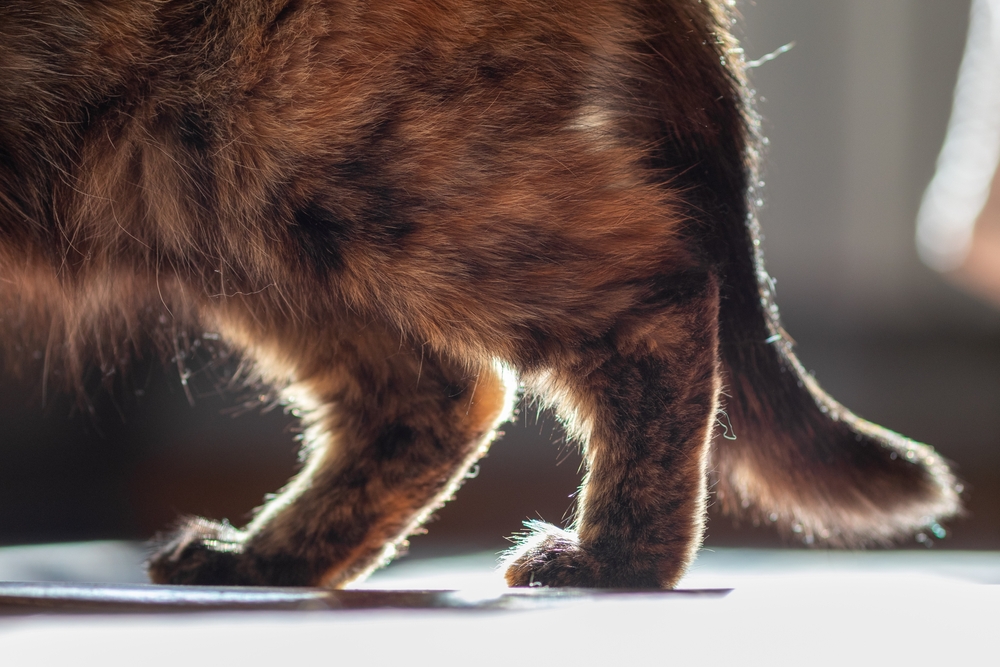
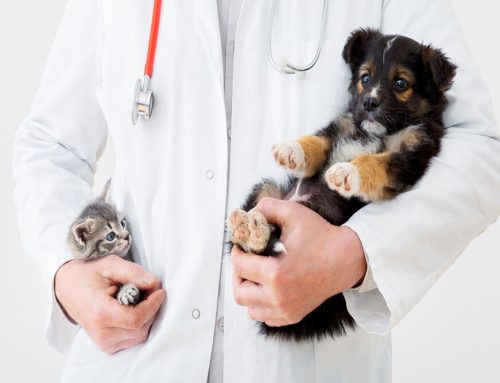
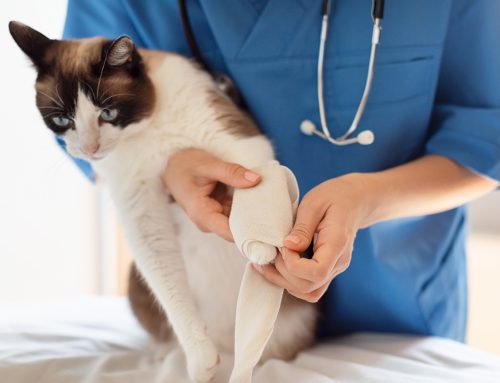
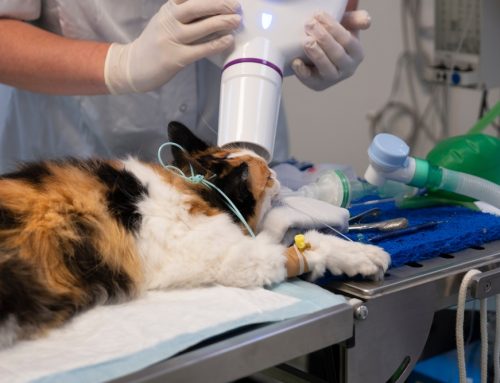
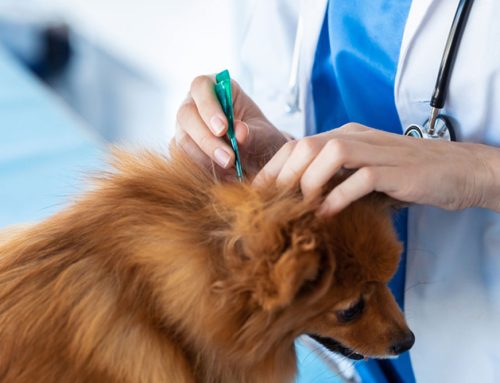
Leave A Comment